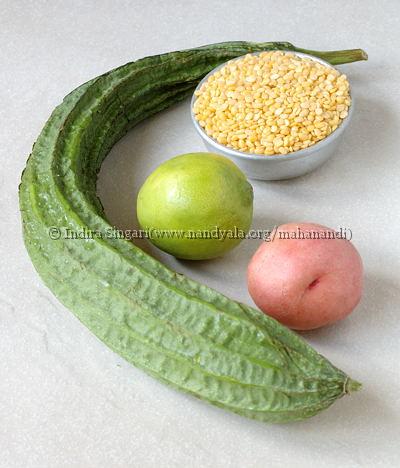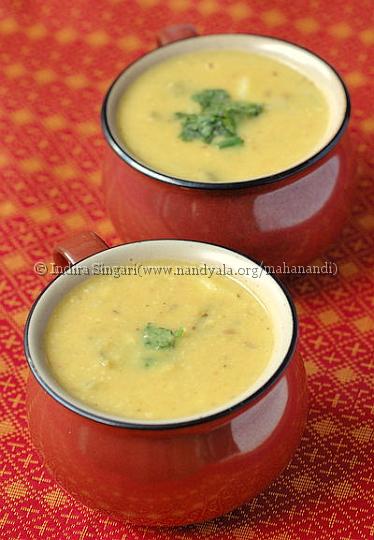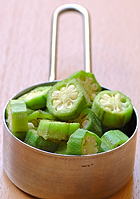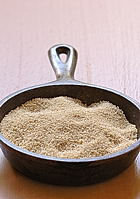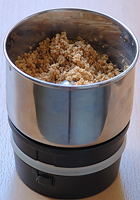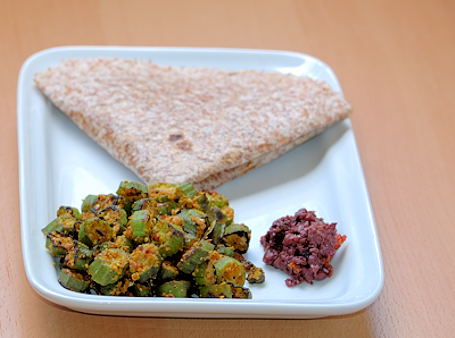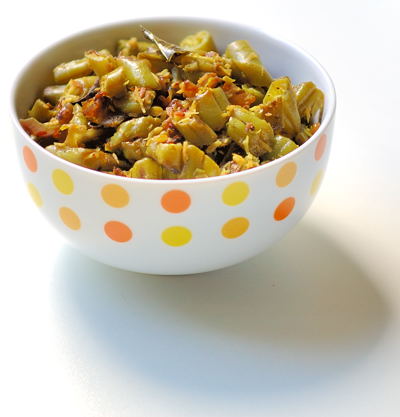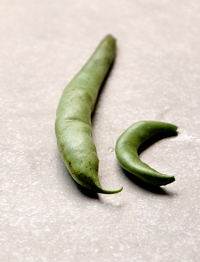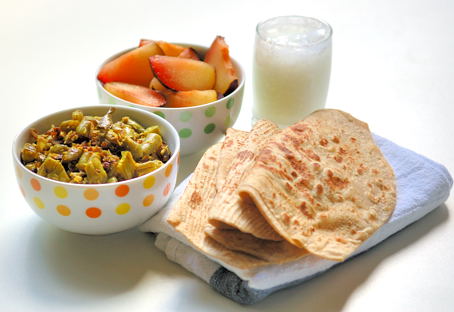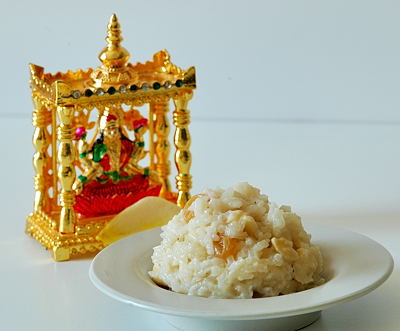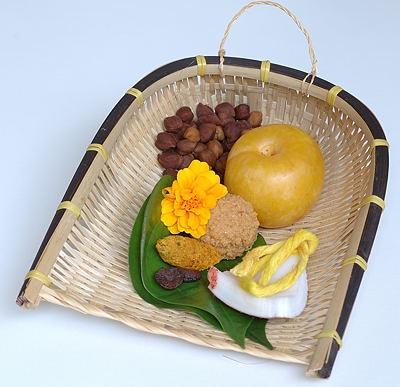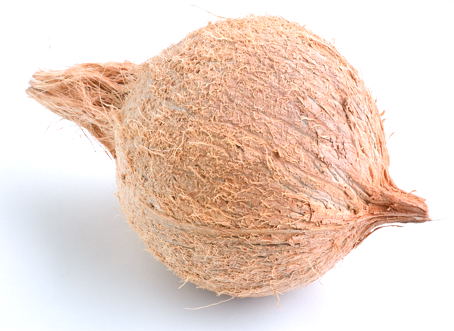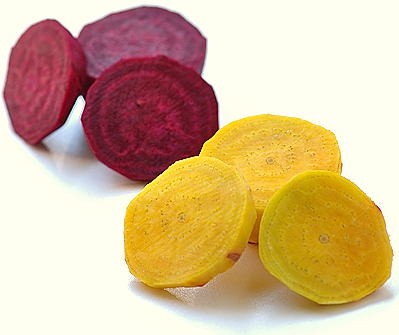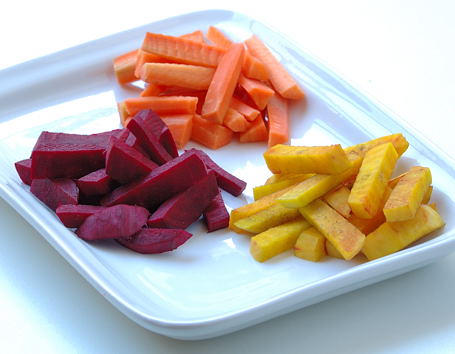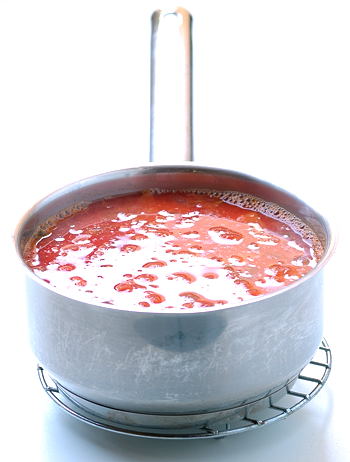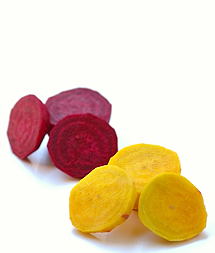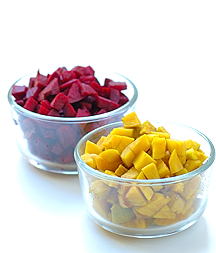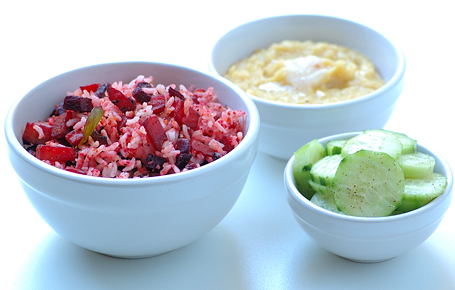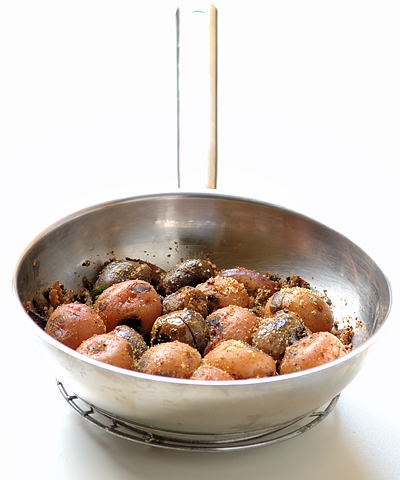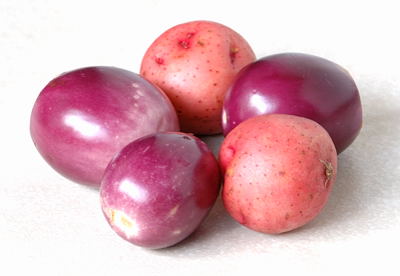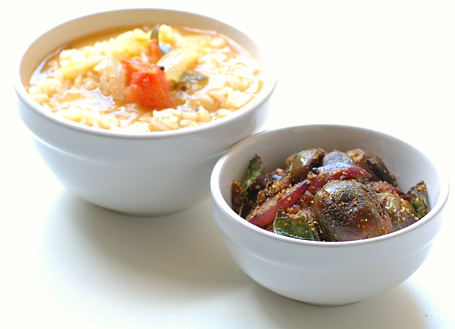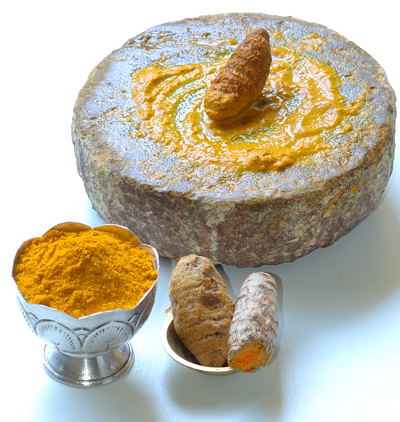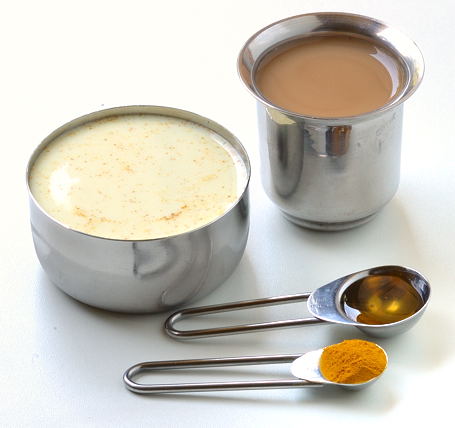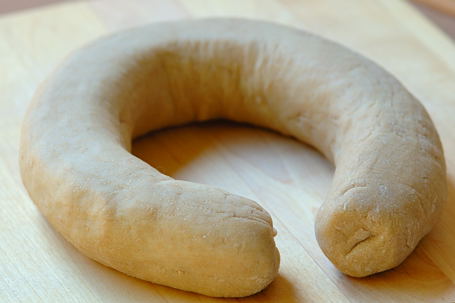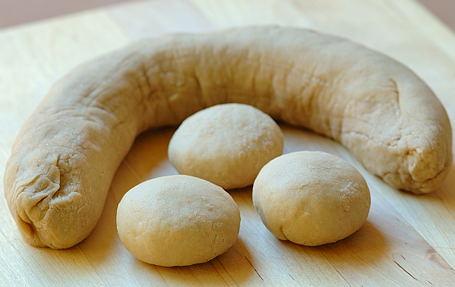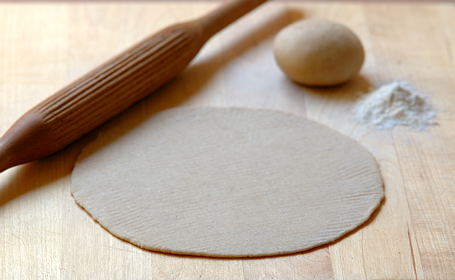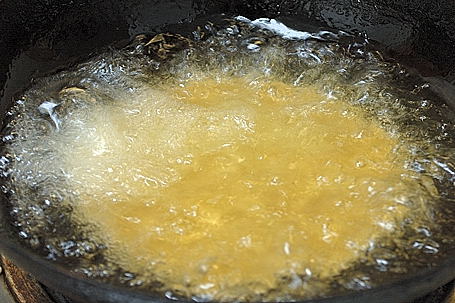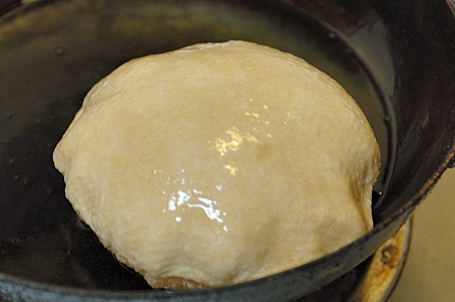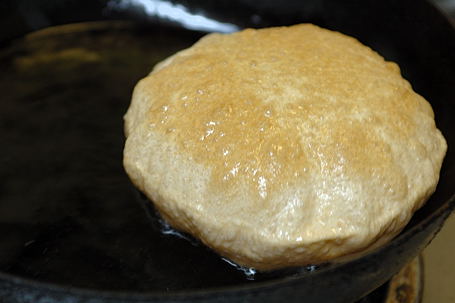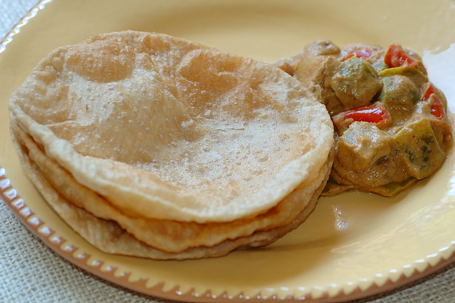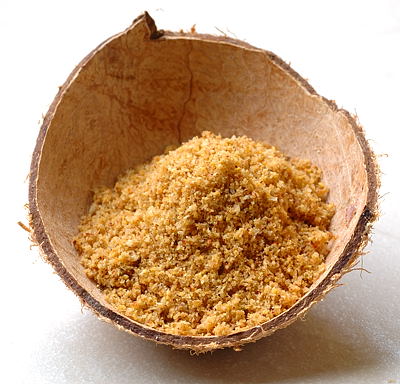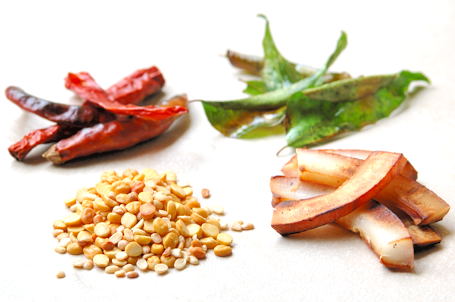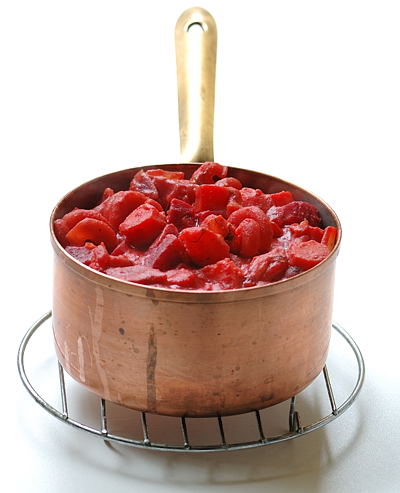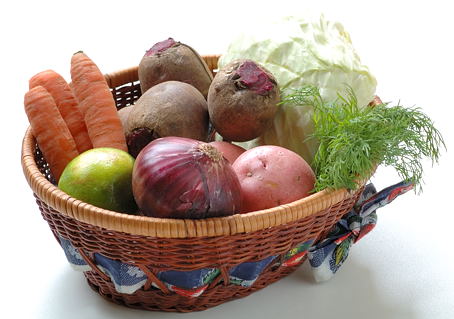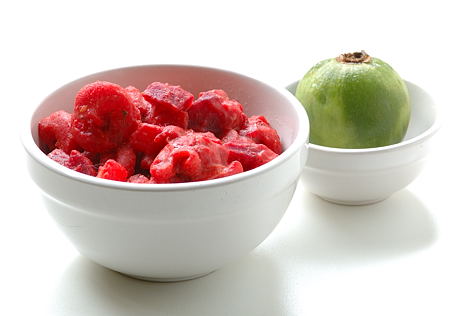Food blogging has opened a new way for me to meeting interesting people who also share my passion and philosophy in cooking. Anjali Damerla of Supreme Spice is one such person. She belongs to the spice world and has a great knowledge about our traditional and ancient spices and herbs. I truly believe that we all could benefit from her knowledge. Through her periodical articles on Mahanandi, Anjali will be sharing the benefits and uses of various spices and herbs.
~Indira.
Asafoetida (Asafetida, Hing, Inguva)
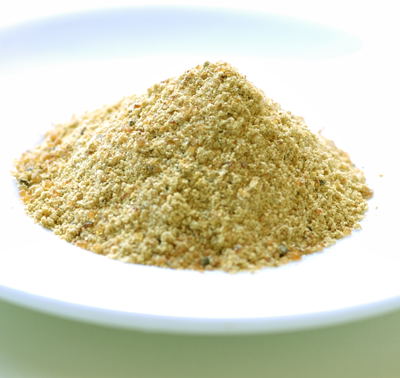
Asafoetida ~ Powdered Form
Asafoetida is a resinous gum that is extracted from the root and stem of genus ferula, a type of giant perennial fennels that is at least 4 yrs old. The stem/root of the plant is slashed and kept in shade while the sap seeps out and hardens. This dried, grayish-white gum is then scraped off which turns reddish and finally reddish-brown as it ages. The asafoetida that we buy in stores has only about 30 -40% of pure asafoetida and the rest is edible starch (rice or wheat flour) to make the powder more manageable. Sometimes gum arabic, turmeric and some additional color are also added to it.
In India, we use asafoetida in our pickles, as a substitute for garlic and of course, in our tadka/popu. The traditional popu/tadka process is incomplete without this spice. Asafoetida was introduced to the West by Alexander the Great in 4th century BC and was used in ancient Roman cuisine as a substitute for a North African plant named Silphium.
Ayurveda highly recommends including all six tastes in our meals. The six tastes are – salty, sour, sweet, bitter, pungent and astringent. Asafoetida comes under the pungent category. Foods and spices that are pungent stimulate appetite and improve digestion. Asafoetida is very helpful in alleviating the sensation of heaviness, fullness or bloating after a heavy meal. Asafoetida has extra heating properties and is used in Ayurveda to rekindle digestive fire. It is also supposed to act as a blood purifier.
Many of us know that a pinch of asafoetida with a glass of buttermilk helps reduce indigestion. But not many know that asafoetida is also used to alleviate toothache. Add a little lemon juice to asafoetida powder and warm this mixture a bit. Soak a cotton ball in this warm mixture and place it on the aching tooth. Or another remedy is to mix pure asafoetida powder and salt, place this mixed powder on the aching tooth. Asafoetida is also used by Homeopathy doctors to treat Irritable Bowel Syndrome.
When it comes to cooking, asafoetida is a must for lentil dishes and curries with green leafy vegetables. Asafoetida is also used a lot for flavoring pickles like tomato, mango etc, and in sauces and is one of the main ingredients in Worcestershire sauce. Adding asafoetida to popu/tadka results in a wonderfully complementary flavor. I also believe that this special spice adds relish to food.
An article on asafoetida is incomplete without a mention of Hingashtak, also known as Hingawastaka. It’s a mixture of 8 spices – asafoetida, black pepper, carom seeds (ajwan), cumin, ginger, pipli (Long Pepper), nigella seeds (Kalonji) and rock salt. In olden times, every family had its own variation of Hingashtak. My own version is a simple mixture of asafoetida, black pepper, ginger, cumin, ajwan and salt. Grind all these spices and mix with rice (squeeze a bit of lime juice if you want) and have just 2-3 morsels of this yummy rice. You can make tiny pills of the Hingashtak and have it before meal. Hingashtak is very heating (and hence aids digestion), so eat very little.
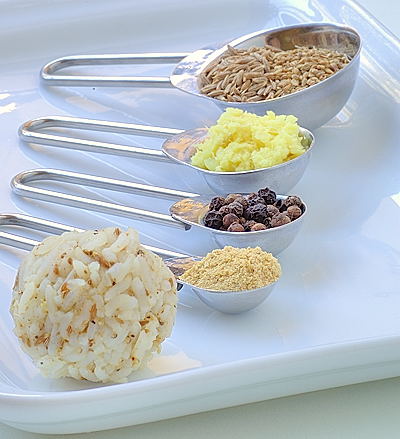
Asafoetida, Black Pepper, Ginger, Cumin and Ajwan ~ for Hingashtak
~ Guest Post by ~ Anjali Damerla of Supreme Spice
Photo Credit : Indira Singari
If you have questions about asafoetida spice, please post them in comments section. Anjali would be glad to answer them for you. Thanks.
